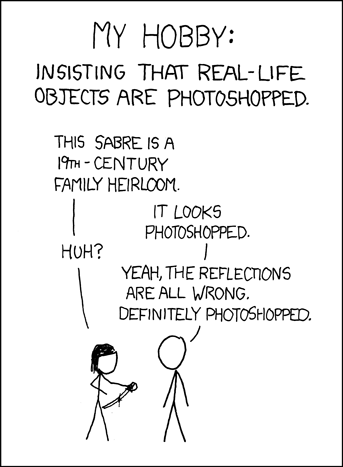
You’ve seen the Photoshop nightmares: the wonky fingers, the “sliced off” hips, the chiseled faces, the flawless skin. To the geeks among us, this kind of digital alteration in advertising might not be as effective, since we know how it works–and we like to laugh at it when it’s done poorly. It doesn’t take more than a few clever strokes with a mouse to make a model go from tired to flawless, after all, but often the steps in between seem to go awry.
However, according to an article in the New York Times, lawmakers in Britain and France are concerned that such picture-perfect images are a bad influence on younger audiences who want to aspire to these unattainable heights. The Liberal Democrats in Britain are seeking to ban all altered images in advertisement geared toward the 16 and under crowd. And in France, legislation is being championed by Valerie Boyer who wants to include warning labels on altered photographs and institute fines for those publications who do not adhere.
Though it’s easy to point fingers at the fashion industry and teeny bopper magazines (surely Hannah Montana has some pimples), it is widespread. From the article:
In 2007, for example, the politically well-connected Paris Match magazine published a picture of Mr. Sarkozy, canoeing while on vacation in New Hampshire, in which the shirtless president’s bulging waist was digitally massaged out of existence. A rival magazine revealed the deception, publishing before and after shots.
And while legislation may be a good step toward bringing back a sense of reality to advertising, I think the geeks have a leg up on the problem of advertising. Many an internet meme and website devotes itself to awful photo alteration. It’s actually amusing. And if something becomes pervasive and a subject of ridicule, maybe it’s time to really think about how affective it is in the first place.
[Picture Source: XKCD]
Tags: advertising, photoshop
